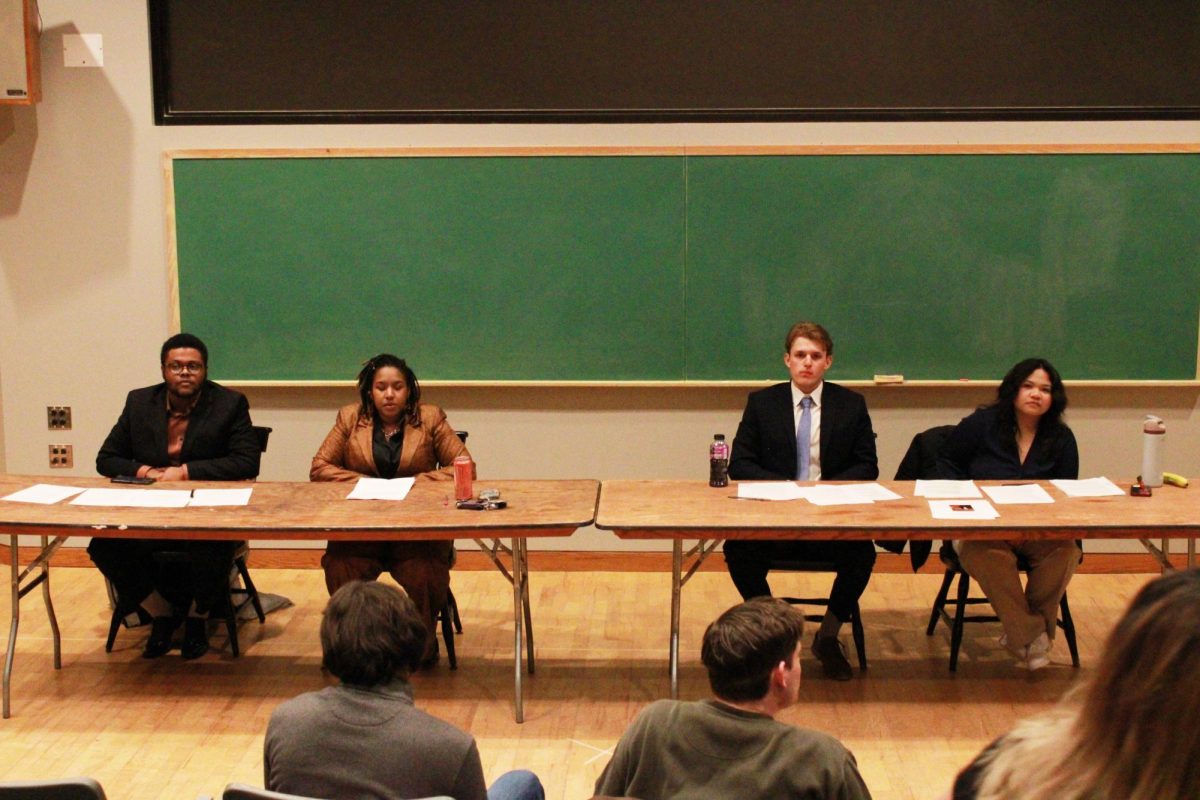Many Allegheny students have expressed frustrations surrounding the newly-instated cost of extra print points. Due to Allegheny Student Government’s approval of a policy proposed by User Services last semester, students now receive double the 1600 print points they did as of last semester. However, if students’ printing habits surpass this new limit, they must pay for more printing privileges at the rate of a penny a point.
The newly increased amount of allotted print points may seem too large for any student to possibly exceed. But if this were truly the case, there would be no need for a limit.
ASG class senator Pedro O’Campo, ‘14, pointed out the difficulty in gauging how much the average student needs to print when senior projects range widely in length according to department and topic.
Some upperclassmen worry that they won’t have enough points to meet all their printing demands while working on their mandatory senior projects.
“I’m a comping senior. If I need extra points and am told I have to pay, I will occupy the shit out of Murray Hall,” said Kara Gacovsky, ’13.
Fadden said that students believing they have a special circumstance meriting extra free points can approach any of the staff members at User Services. In some cases, such as with extra-long comps or with current third or fourth-year students who haven’t had the chance to accumulate build up rollover points, extra points may be granted at no charge.
“Hopefully with the fact that we’ve given 3,200 points, which is a substantial amount of points for students in any given semester, we won’t have to do that,” said Fadden.
For students involved in extracurricular activities and especially those holding leadership positions, the Office of Student Involvement offers copy cards so students can print numerous copies for members without sacrificing their own print points.
“The print point system is really made for personal printing,” said Fadden. “But we do want to make sure that student organizations still have access to copying as they always have.”
Fadden added that he hopes the initiative will encourage group members to utilize Google calendar and other online resources more heavily.
Allegheny’s printing system started evolving with the implementation of the print server PaperCut three years ago.
Before PaperCut permitted printing from laptops, students essentially had to be in the library in order to print. This past summer, the college updated its version of PaperCut. Now, if students download the new client, they can print without uploading documents to Web Print.
Director of User Services James Fadden explained that initially PaperCut began to provide easy access to good printing features, like options for double-sided sheets and color, in an environmentally conscious way.
Print points, which were initially intended for documentation purposes only, helped User Services to draw conclusions about students’ printing needs and determine a specific semester limit.
User Services examined the number of print points used throughout the last four semesters to decide on a limit of 3,200 points per semester. According to their calculations, this many print points are equivalent to 800 sheets of paper, all double-sided with occasional use of color.
“What we found was that 85 percent of student printing needs in any of those four semesters were met [by that many print points],” Fadden said. “We also realized that during some semesters you print more, some you print less.”
In an ASG meeting last spring, the student government voted with a majority in favor of charging students for extra points.
User Services has worked continuously with ASG since the implementation of PaperCut to determine how to best meet students’ printing needs without adding any additional costs to the budget.
O’Campo, recalls an ASG meeting last spring in which members speculated on why a small percentage of students used far more points than the limit. One proposed idea was that some students simply copied and printed textbooks instead of buying them.
Senior Michael Kastelic pointed out that printing a lot of material doesn’t necessarily signify abuse of the print point system. “As a science student, we print out a lot of very long articles, especially while comping or in a junior seminar,” he said. “I’ve requested more print points up to three times in a single semester, and they were all put to good use.”
“It’s nice to have a hard copy to read and make notes on,” said Kastelic.
Although he voted against the proposal, O’Campo admitted that setting a limit on print points could potentially benefit the environment.
“The amount of paper students use will decrease because [the system] makes them conscious of how they use their points,” said O’Campo. “But at times professors assign online readings for students to print out…that might become an issue.”
Fadden said that upon examining the print point numbers last spring, User Services learned paper consumption had decreased since PaperCut was instituted.
ASG asked User Services whether any more steps should be taken based on these positive results. The main issue debated on was determining what constitutes a “reasonable” amount of print points.
“It wasn’t exactly nailed down what was excessive printing,” Fadden said. “But the general sentiment I got from the students on ASG was that there is a ‘reasonable’ amount of printing, and generally 3,200 points will meet that need.”
User Services then considered how many points should roll over between semesters.
“With everything we do as a college we try to get the most bank for our buck, and the sense we got…was that we need to make sure there’s more than enough points for students to do a reasonable amount of printing,” said Fadden.
User Services then decided to allow up to 4,000 print points to roll over between semesters. Based on this number, close to 100 percent of a current first-year student’s printing needs should be met by the time he/she is a junior, according to Fadden.
Despite the plausibility of this assumption, some students feel cheated by the mere principle of charging for extra points–especially considering that a number of students recall User Services claiming they would never charge for points three years ago.
Kastelic heard of this claim through a grapevine of students. One Gator Guide who also remembers hearing about it last year has often mentioned Allegheny’s free printing policy while giving tours to prospective students.
“A lot of schools do charge students to print…But we pay the extra dollar to go here, and I took pride in Allegheny for giving us the resources to print free of charge,” said Kastelic. “I can’t help but feel slightly betrayed.”
Fadden, however, doesn’t recall any such claim ever being made. “I don’t know that I ever wrote anything about how [students] would never be charged. If that was the impression that was given, that was totally unintentional,” he said.







